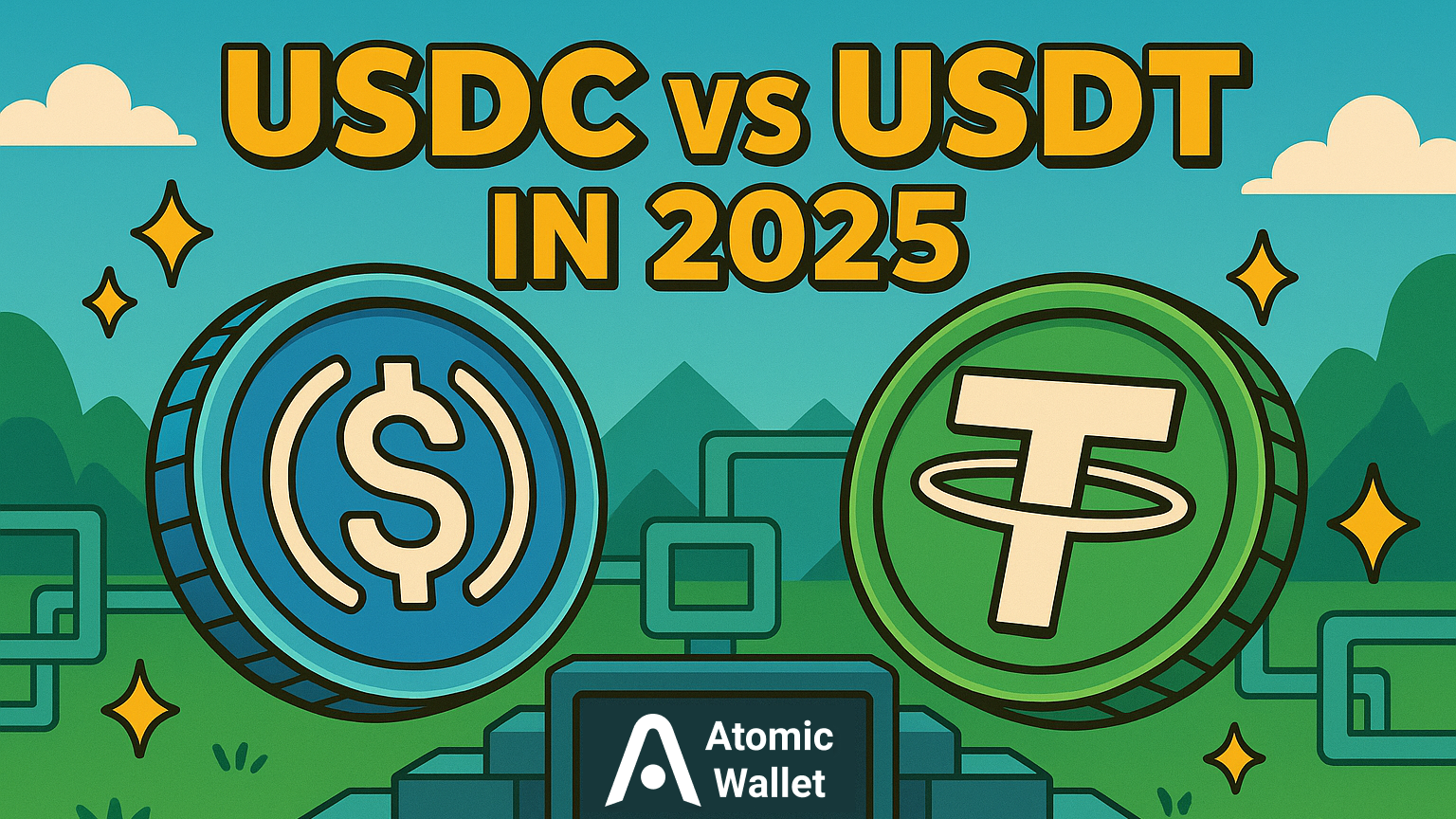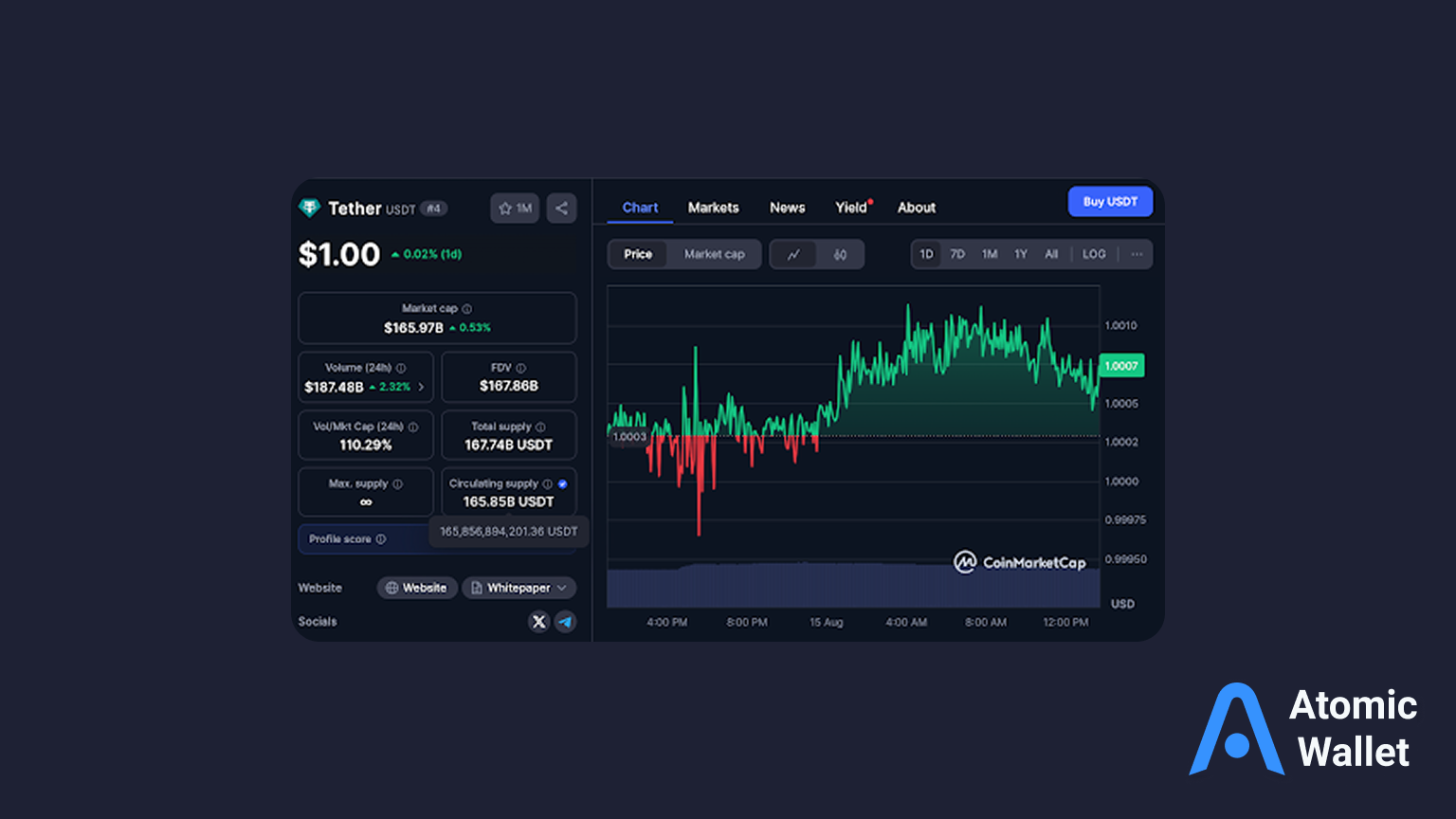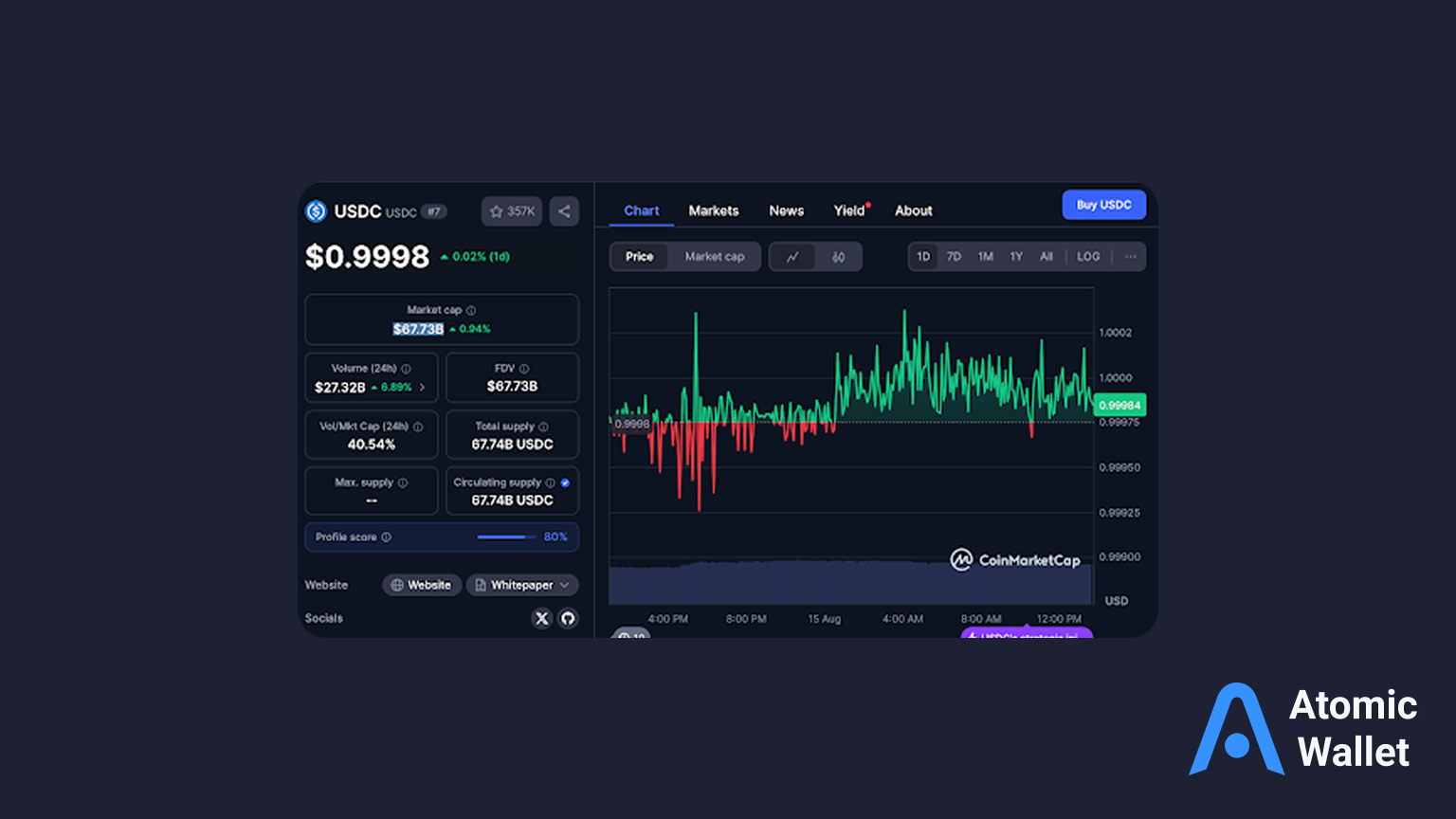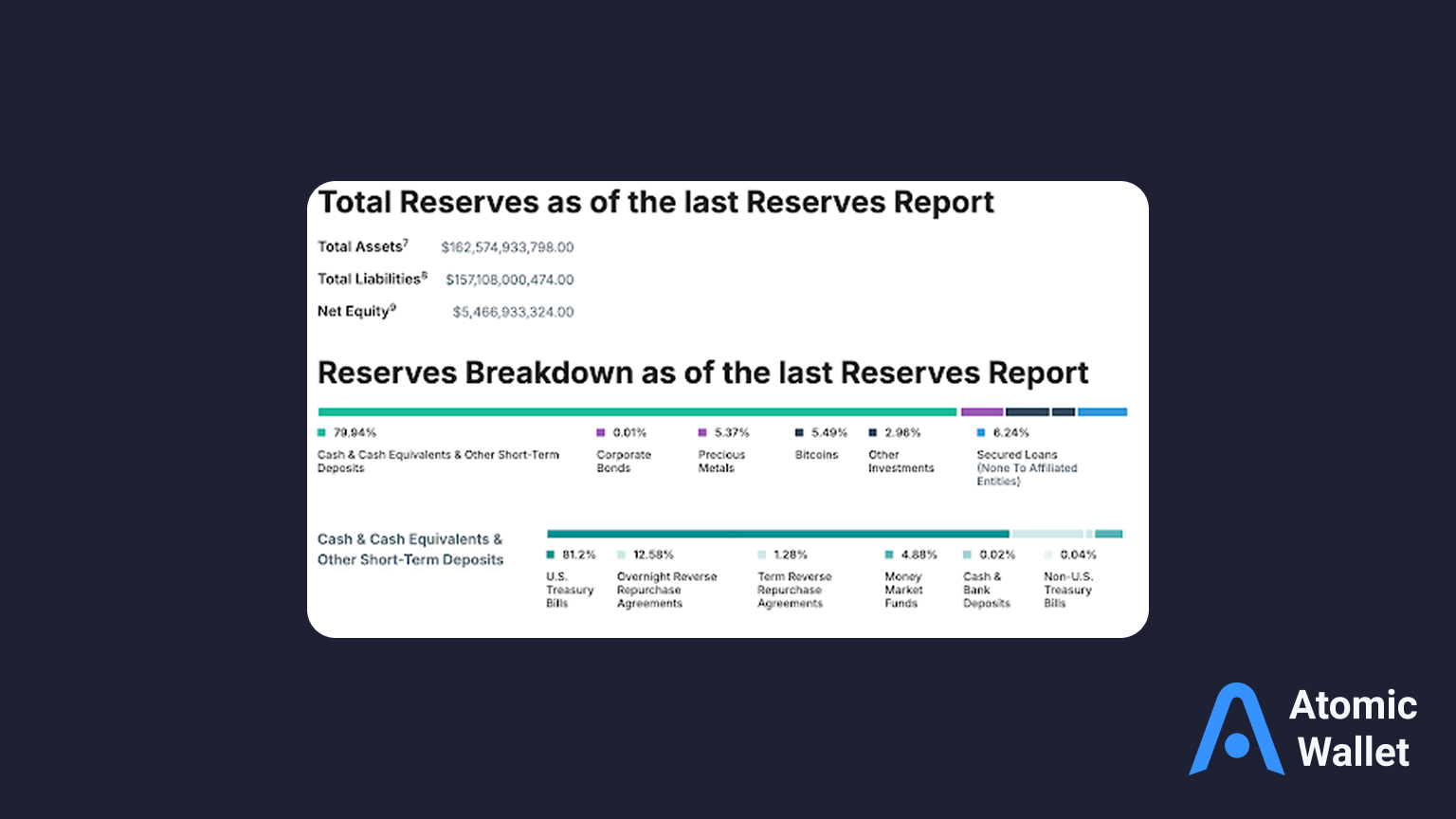Assets

Exchange

Buy Crypto




Stablecoins now anchor much of the cryptocurrency ecosystem. Instead of weathering wild price swings like Bitcoin or Ethereum, people park value in a digital dollar—the modern equivalent of tagged cash. In today’s world, that means choosing between two heavyweight options: USD Coin (USDC) and Tether (USDT).
Both offer a steady peg to the U.S. dollar and power everything from DeFi protocols to cross-border payments. But the paths they took to get there couldn't be more different. One grew by offering trust and transparency. The other won by being everywhere, fast.
Tether (USDT) is the first successful stablecoin introduced in 2014. Its creators promoted it as a digital equivalent of the US dollar and was able to be transmitted across blockchain networks. This was originally planned to be of high liquidity and wide compatibility. With time, USDT evolved to become the default option of the traders who require a fast and stable unit of account in the crypto exchange.
USDC came in the year 2018, created by Circle under the partnership with Coinbase under the Centre Consortium. Since its introduction, the USDC has underlined regulatory compliance, transparency, and periodic auditing. Being friendlier to the institutions enabled it to gain acceptance in the sector by the businesses, payment processors, or DeFi protocols which needed a tolerable and transparent, dollar-led asset.
Such dissimilarity in the origins has been able to influence the perception of the market up to date. USDT weighs on its early popularity and incomparable liquidity but also a track record of regulatory questioning and transparency issues.
USDC is also a more spotless compliance track record and steadier reserve disclosures, even though it has not been able to challenge USDT scale-wise, in terms of total market cap and trading volume.
As of press time, USDT keeps being the largest stablecoin by its market cap value with about $165.96B. It operates over dozens of different blockchains, including Ethereum, TRON, Binance Smart Chain, Solana, and several others, which allows it to be used by practically any corner of the crypto-trading industry. This multi-chain availability has contributed to the fact that USDT has continued to dominate both either in the spot market or the derivatives markets, where speed and depth of liquidity is very fundamental.

The market cap of USDC is small, approximately $67.74B, but it has gradually expanded its presence. First issued on Ethereum, USDC has since been applied to other networks, such as Algorand, Stellar, and Hedera, making it useful outside of the Ethereum ecosystem.

Although the trading volume is not as high as that of USDT, USDC is the favorite among most institutional investors and fintech trading platforms because of its compliance credentials.
Liquidity may be among the defining factors of what an individual chooses to use as a stablecoin because it matters to traders. The most high-volume exchanges will have both listing trading pairs in both USDT and USDC but smaller or geographically specific exchanges may prefer USDT, which has had a longer history and represents greater liquidity depth.
One of the brightest bases of divide between USDT and USDC is the manner in which each of the stablecoins manages and discloses the reserves.
USDT is created by a privately owned company known as the Tether Holdings Limited, which is a company incorporated in the British Virgin Islands and has links of operation to the El Salvador. It invests in US treasury bills, cash equivalents, money market funds, overnight repurchase agreements, secured loans, Bitcoin, and other investments under precious metal investments.
As of August 15, 2025, Tether asserted 162.6 billion dollars worth of assets compared to 157.1 billion dollars of liabilities, which means a surplus.

However, Tether does not publish the full reserve balances on a monthly, but a quarterly basis, and past reports of uncompleted audits have led to a series of suspicions in the regulatory spheres and larger investor groups.
Circle, a US-based company, with pending IPO status is in charge of USDC reserves. The major constitutions of USDC reserves are short-term US Treasuries and overnight repurchase-agreements while the rest is held in form of US cash with the regulated US financial institutions.
Circle also gives monthly reserve reports that are checked by third parties, in conjunction with weekly reserve and token release figures on their composition. By the first week of August 2025, the Circle showed 64.7 billion dollars as the reserves and 64.6 billion dollars as the USDC in circulation practice a thorough one-to-one collateral policy.
However, Tether does not publish the full reserve balances on a monthly, but a quarterly basis, and past reports of uncompleted audits have led to a series of suspicions in the regulatory spheres and larger investor groups.
Circle, a US-based company, with pending IPO status is in charge of USDC reserves. The major constitutions of USDC reserves are short-term US Treasuries and overnight repurchase-agreements while the rest is held in form of US cash with the regulated US financial institutions.
Circle also gives monthly reserve reports that are checked by third parties, in conjunction with weekly reserve and token release figures on their composition. By the first week of August 2025, the Circle showed 64.7 billion dollars as the reserves and 64.6 billion dollars as the USDC in circulation practice a thorough one-to-one collateral policy.
This stable transparency made USDC more popular because it is considered more accountable, especially among institutional partners. Although the disclosures provided by USDT have been getting better over the last few years, the disparity between reporting schedules and reserve make-up is a significant element in the trust equation.
Regulation is emerging as a central concern of stablecoins. USDC is based in the United States, aims to be publicly listed, and meets the requirement of regular audits, which puts it in line with US authorities. Circle and its partners have been highly proactive in seeking out lawmakers and regulators, making USDC an example of how compliant stablecoins should be issued.
USDT on the other hand uses an offshore business model that removes it under direct US jurisdiction. This is beneficial to its flexibility of operations as well as the risk of increased focus by the US and European regulators.
Regulators such as the Commodity Futures Trading Commission and the New York Attorney General have investigated Tether, and fined it. The risk mindful shareholder will still take into consideration the possibility of additional reforms to its operations that still go on without a significant hitch.
The USDC and USDT are utilized towards the same purpose; they can be utilized in facilitating the trades in the cryptocurrencies, cross-border payment, and they can be used as collaterals in DeFi protocols. Nevertheless, they are positioned in the market differently.
Its liquidity is unparalleled, and that is why USDT is used as a default when it comes to high-frequency traders or those working on the exchanges with the most extensive volumes. It also serves to increase its presence across other blockchains on which fast low fees are essential like the TRON network.
The strengths of USDC are associated with the integration with compliant fintech services, payment processors and institutional trading platforms. It is appealing to corporate treasies, regulated DeFi products, and cross-border payments, given its transparency and regulatory stance; this is where it matters to comply with anti-money laundering (AML) and know-your-customer (KYC) requirements.
For investors seeking a secure and user-friendly way to hold or exchange both USDC and USDT, Atomic Wallet offers integrated access to multiple blockchains without requiring a centralized exchange account.
Users can buy either stablecoin directly within the app through integrated payment partners, swap between them instantly, and store them with full control of their private keys. This makes it convenient for traders who need flexibility, as well as long-term holders who prioritize custody and security.
While they share a peg to the US dollar, USDC and USDT diverge sharply in two key areas that investors should weigh:
Other stablecoins such as the Binance USD (BUSD) and Gemini Dollar (GUSD) hold smaller market nodes. GUSD is entirely collateralized by the US dollars in FDIC-insured banks and which are governed by the US financial regulations.
Meanwhile, tts availability in the Gemini exchange has made it easy to be used by customers using the exchange, although its use is nowhere its limits in comparison with USDC and USDT.
GUSD, in the wider stablecoin debate, can be used as an example of an institutionally compliant design, but is not directly competitive with the liquidity profile of USDT, nor with the institutional access of USDC.
A new trend in the year 2025 is the use of stablecoins in real-world asset (RWA) yield possibilities. The collaboration between BlackRock and Circle has enabled holders of USDC to invest into tokenized money market funds, which has provided new mechanisms by which one can earn returns without moving outside the stablecoin ecosystem.
Foreign finance houses find this form of integration attractive since they are interested in compliant blockchain-based yield products.
There is no equivalent flagship partnership within the RWA space identifiable with the USDT but it is deeply utilized in decentralized platforms that provide yield to its users through lending, staking, and liquidity provision.
Multichain DeFi protocols including SkyLink may support deposits of both USDC and USDT to increase access to yield opportunity. Large-issuing USDT on TRON has also placed it in good stead in regard to high speed low costs transfers in the emerging market.
The defining strength of USDC among Wall Street firms and regulated financial institutions is overwhelmingly its transparency, compliance and predictable oversight. This has been a preference that has only increased due to an increase in the availability of tokenized securities and RWA products in the market. To these institutions, USDC will be a stable and reliable on-chain dollar complying with ratification requirements.
Retail traders particularly most of those who are involved in the trading of perpetual futures contracts and spot, tend to be attracted to USDT. The fact that it is virtually everywhere, has immense liquidity, and it is an accepted instrument in international exchanges makes it a convenient trade to exploit in a short time or to get an arbitrage position.
Not that stable means invincible. Neither is an FDIC-insured coin. In the event of mismanaged reserves, regulatory crackdowns, people would lose value. Moreover, token de-pegging, in case the belief in the backing is lost-is also a real threat.
The key threat of USDT is the lack of transparency and regulatory heat. The reverse side of USDC is the closer connection with U.S. financial systems, which is associated with its own politics that is subject to changes.
USDT thrives because of market reach. USDC wins with transparency. Both will continue to grow, but in different lanes.
In the next few years, expect USDC to rise in institutional and payment use, while USDT remains the choice for high-speed crypto operations. Either way, knowing both is no longer a luxury. It's a smart strategy.
For investors looking to hold, exchange, or swap these stablecoins securely, Atomic Wallet provides a convenient, non-custodial solution that supports both USDT and USDC across multiple blockchains.

Learn how Polygon Bridge works and move Polygon crypto like USDC Polygon between Ethereum and Polygon step by step.